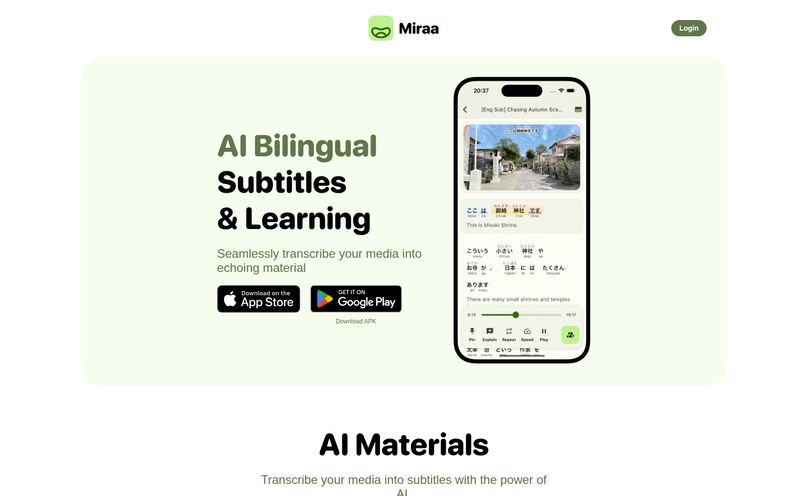How many browser tabs do you have open right now? If you’re anything like me, the answer is somewhere between “an embarrassing amount” and “enough to make my computer fan cry for mercy.” We live in a world of information overload, a chaotic storm of Slack messages, Google Docs, code repositories, and a dozen half-finished thoughts. My digital workspace often resembles a teenager’s bedroom—stuff everywhere, with a system only I can pretend to understand.
For years, I've been on a quest for the perfect tool to tame this chaos. I've tried everything. Outliners, to-do lists, Kanban boards, wikis... you name it. They all help, to a degree. But they all share a common flaw: they’re linear. They force my sprawling, non-linear thoughts into rigid, straight lines. It's like trying to explain a dream using a spreadsheet.
Then, a few weeks ago, I stumbled upon something called SPAICE. The name itself—Spatial AI Collaborative Environment—sounded like something out of a sci-fi movie. I was intrigued. I clicked. And folks, I think I might have found it.
So, What Exactly is SPAICE? (And Why Should You Care?)
Imagine if you could take all those open tabs, all those scattered files, and all those random thoughts floating in your head and lay them out on a massive, infinite table. Not as a list, but as physical things you can move around, connect with strings, group together, and inspect from any angle. That's the 'Spatial' part.
Now, imagine that table has a built-in assistant—no, a whole team of assistants—who can instantly read any document you put down, analyze any piece of code, or brainstorm new ideas based on the connections you've made. That's the 'AI' part.
In short, SPAICE is a visual workspace. It’s a mind map on steroids. It's like Figma, but for your entire brain. You work with “nodes”—little blocks that can contain text, code, or even entire files. You arrange them on a canvas, draw connections, and then use powerful AI models to work with them. It’s one of the first tools I've seen that feels like it was designed for how brains actually work: spatially and associatively.

Visit SPAICE
My First Impressions: Playing on the Digital Canvas
Logging into SPAICE for the first time was... refreshing. There were no folders, no complex menus, just a clean, blank canvas. It felt less like opening a software application and more like unrolling a fresh sheet of paper. My first instinct was to just start dumping ideas. I created a node for a new blog post topic. Then another for some keyword research. I uploaded a PDF of a competitor's article.
Instead of being tucked away in different apps, they were all there, coexisting in the same space. I drew a line from the keyword node to the blog post node. Simple, but powerful. I could see the relationship. This wasn't just a file system; it was a thought system. It’s a subtle shift, but it changes everything.
The Standout Features That Genuinely Matter
Lots of tools promise the world. But after spending some serious time with SPAICE, a few features have really cemented themselves as daily drivers for me. It's not just about having a cool interface; it's about what that interface allows you to do.
The Visual, Node-Based Playground
This is the heart and soul of SPAICE. The freedom to visually organize your work is liberating. I'm currently using it to map out a complex content marketing funnel. I have nodes for target audience personas, core topics, primary articles, supporting social media posts, and email sequences. Seeing it all laid out, with arrows showing the flow of the user, is infinitely more intuitive than the 10-page Google Doc I used before. It's the difference between reading a map and actually seeing the terrain.
Your AI Co-Pilots on Demand
This is where SPAICE pulls away from the pack. In the top toolbar, you can see a dropdown to select different AI models. The images show options like GPT-4o and Claude 3 Opus. This is huge. The ongoing debate about which LLM is 'best' is moot when you can switch between them on the fly. Need some creative, human-sounding copy? Maybe Claude is your guy today. Need to analyze a complex Python script and find bugs? GPT-4o might be the better choice.
I can select a node containing a rough outline, click the AI button, and ask it to “Flesh this out into a detailed blog post structure.” Seconds later, a new set of connected nodes appears, complete with H2s and H3s. It feels less like 'prompting' and more like a true conversation with my own content.
Collaboration That Doesn't Feel Clunky
I roped in a colleague to test the collaboration features. We started a shared space for a new client campaign. He could add his research nodes while I built out the SEO strategy side-by-side. No more “Hey, can you share that doc?” or version control nightmares. We just work in the same visual space, leaving comments and connecting our ideas in real-time. It's what collaborative whiteboards like Miro promise, but with the added depth of file management and integrated AI.
A Reality Check: Who Is This Tool Really For?
As much as I'm geeking out, I know this won't be for everyone. If you live and die by your spreadsheets and linear lists, the open-ended nature of SPAICE might feel a bit chaotic at first. But for certain roles, I think it's a game-changer.
- Developers & Coders: This is a big one. You can drop entire code files into nodes, have the AI analyze them, explain complex functions, or even help you visualize an application's architecture. It's a fantastic tool for untangling legacy code or planning a new project from the ground up.
- Content Strategists & SEOs: Oh, hello. Planning topic clusters, visualizing internal linking strategies, brainstorming content calendars, generating dozens of article ideas from a single keyword... it's a dream. I've already mapped out my entire Q3 content plan in it.
- Project Managers: For those who think in flowcharts and dependencies, SPAICE is a natural fit. You can create visual roadmaps that are far more dynamic than a static Gantt chart.
- Students & Researchers: Imagine connecting all your source materials—PDFs, web clippings, notes—and having an AI assistant help you find themes and build arguments. It's a research paper powerhouse.
The Not-So-Perfect Parts: A Few Wrinkles
No tool is perfect, right? And SPAICE is no exception. It’s important to go in with eyes open. For one, there's a bit of a learning curve. Not a steep one, but you have to un-learn your reliance on folders and lists. It takes a day or two for the spatial concept to truly click.
Naturally, it’s entirely dependent on an internet connection. There's no offline mode that I could find, so if you're on a spotty connection, you're out of luck. Also, the heavy reliance on AI means you have to be mindful. While incredibly powerful, AI models can still be wrong. It's a co-pilot, not the pilot. You still need to steer the ship and double-check the important stuff. Finally, the free version, as is often the case, will likely have some limitations, pushing heavy users toward a paid plan. Its just the nature of the SaaS beast.
What's the Damage? A Look at SPAICE Pricing
This is the million-dollar question. As of this writing, I couldn't find a public pricing page. It seems SPAICE might still be in a beta or early access phase. I'm using a free account that feels very generous, but the mention of a “free version” in its own documentation implies a tiered structure is coming.
My guess? We'll see a classic freemium model. A free plan with a limited number of nodes or AI credits, and then paid tiers (probably for individuals and teams) that offer unlimited usage and more advanced features. I’ll be keeping a close eye on this, because the price will be a major factor in its wider adoption.
Frequently Asked Questions About SPAICE
How is SPAICE different from Miro or FigJam?
While they share the visual whiteboard concept, SPAICE's core is its deep, native AI integration and its ability to handle different file types (like code) as functional nodes. Miro and FigJam are more for freeform drawing and diagramming; SPAICE is more like a structured, thinking environment.
What AI models does SPAICE support?
Based on the interface, it supports major models like OpenAI's GPT-4o and Anthropic's Claude 3 Opus. The ability to switch between them is a key feature.
Is there an offline mode?
Currently, it does not appear to have an offline mode. You need a stable internet connection to use the platform and its AI capabilities.
Can I export my work from SPAICE?
Yes, you can typically export your visual maps and the content within the nodes. The specific formats might vary, but getting your data out is a standard feature for tools like this.
Is it secure for sensitive company data?
This is a crucial question for any cloud-based AI tool. You should always review their privacy policy and security documentation. For highly sensitive intellectual property, I'd exercise caution, as with any third-party AI platform, until they release detailed security compliance information.
The Final Verdict: Is SPAICE Worth Your Time?
After a few weeks, I’ve managed to clean up that 'crime scene' on my desktop. SPAICE hasn’t just organized my files; it’s started to organize my thinking. It’s a bold, innovative take on what a productivity tool can be. It's not just another app—it’s a different way of working.
If you're a visual thinker, a developer drowning in complexity, or a creator looking for a spark, I wholeheartedly suggest you give it a try. It might just be the tool that finally makes sense of the beautiful, chaotic mess inside your head. It certainly is for mine.
Reference and Sources
- OpenAI's GPT-4o Announcement
- Anthropic's Claude 3 Model Family
- Forbes Article on Generative AI in the Workplace



